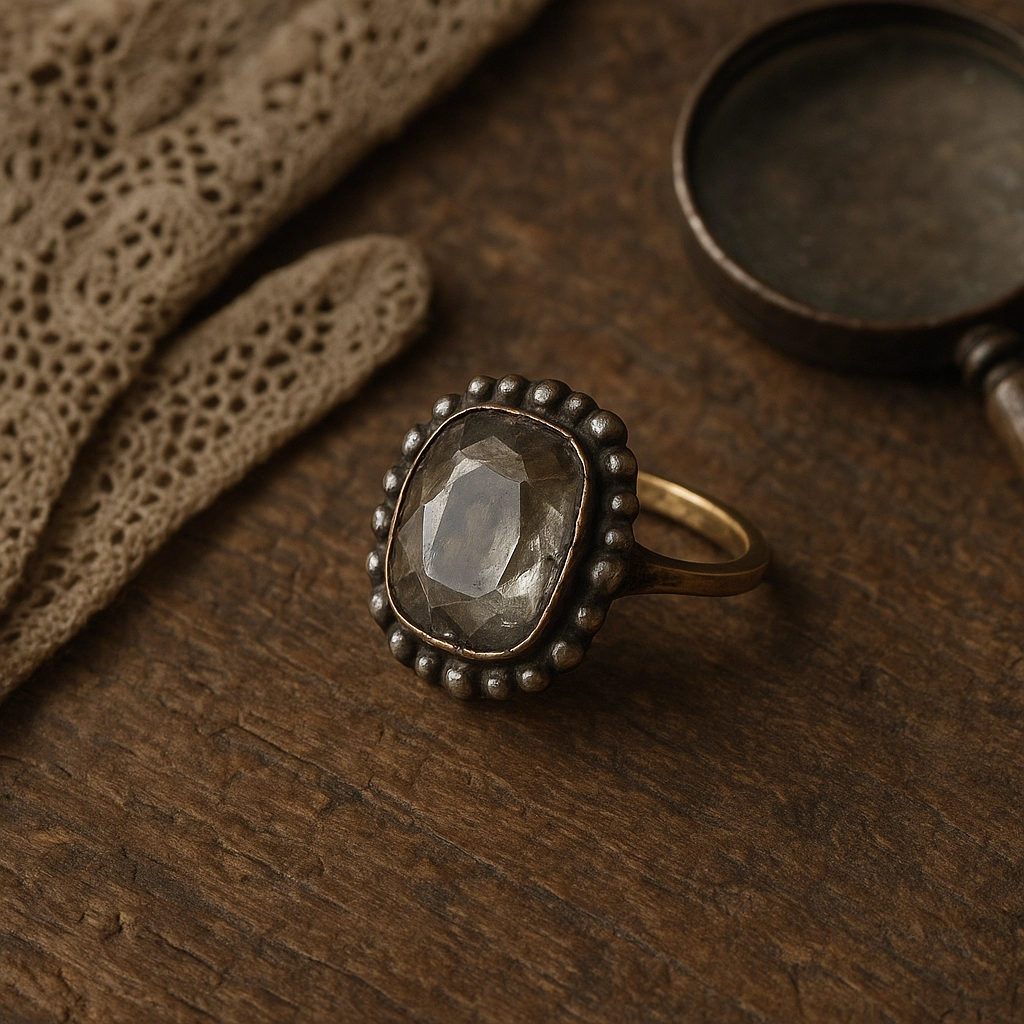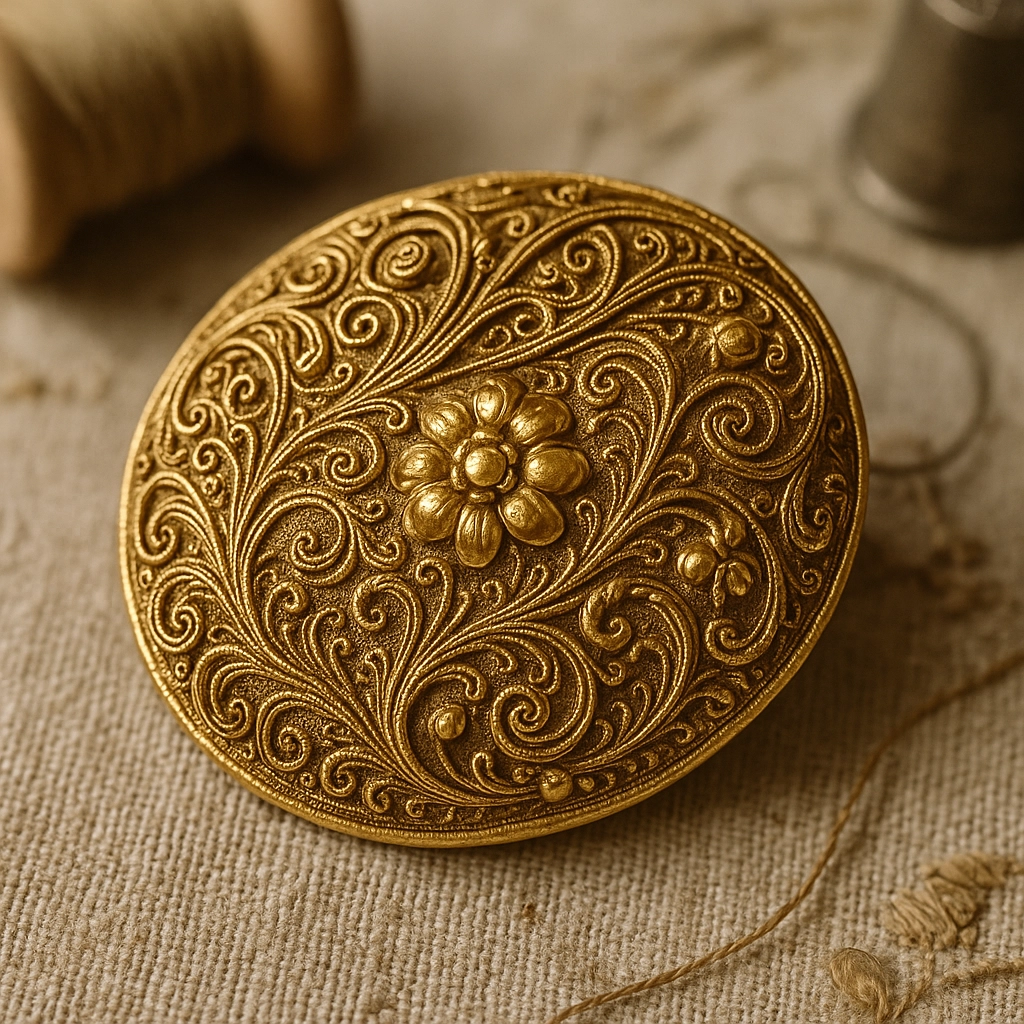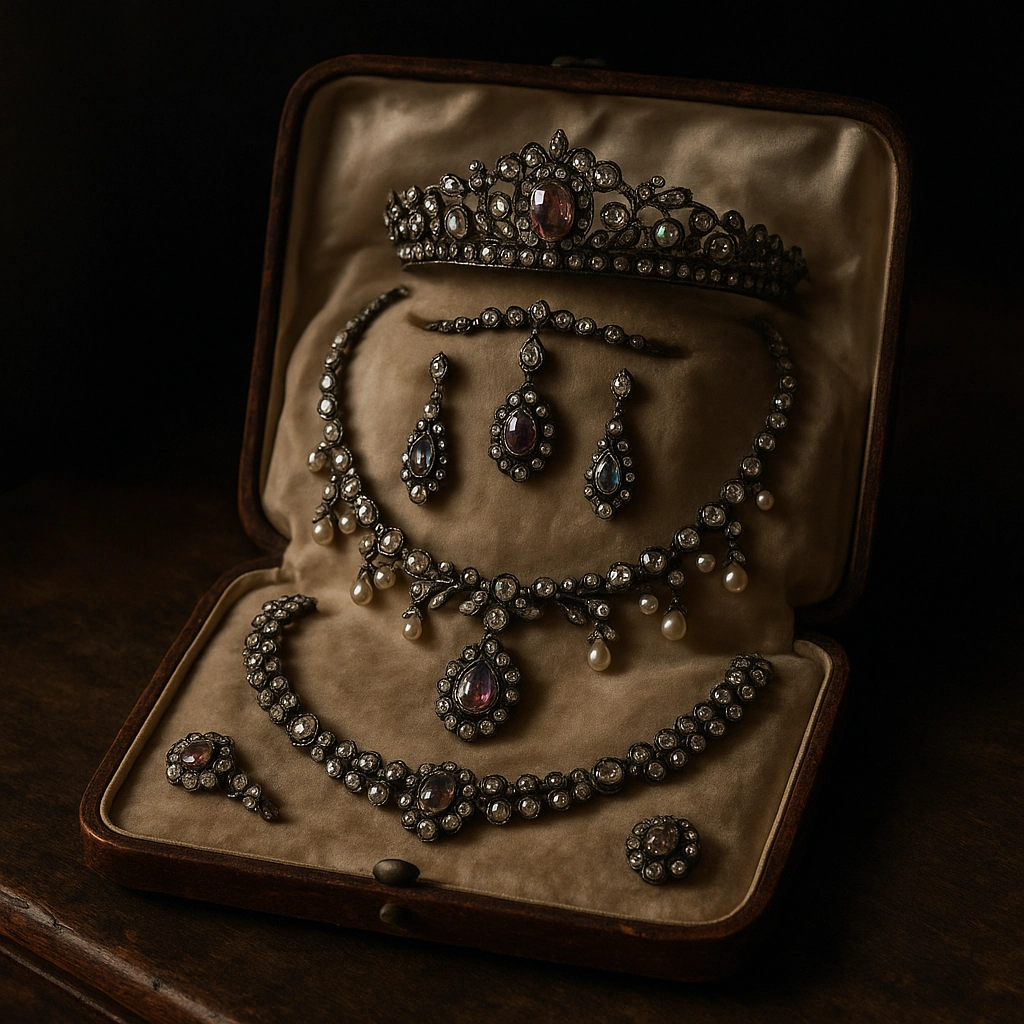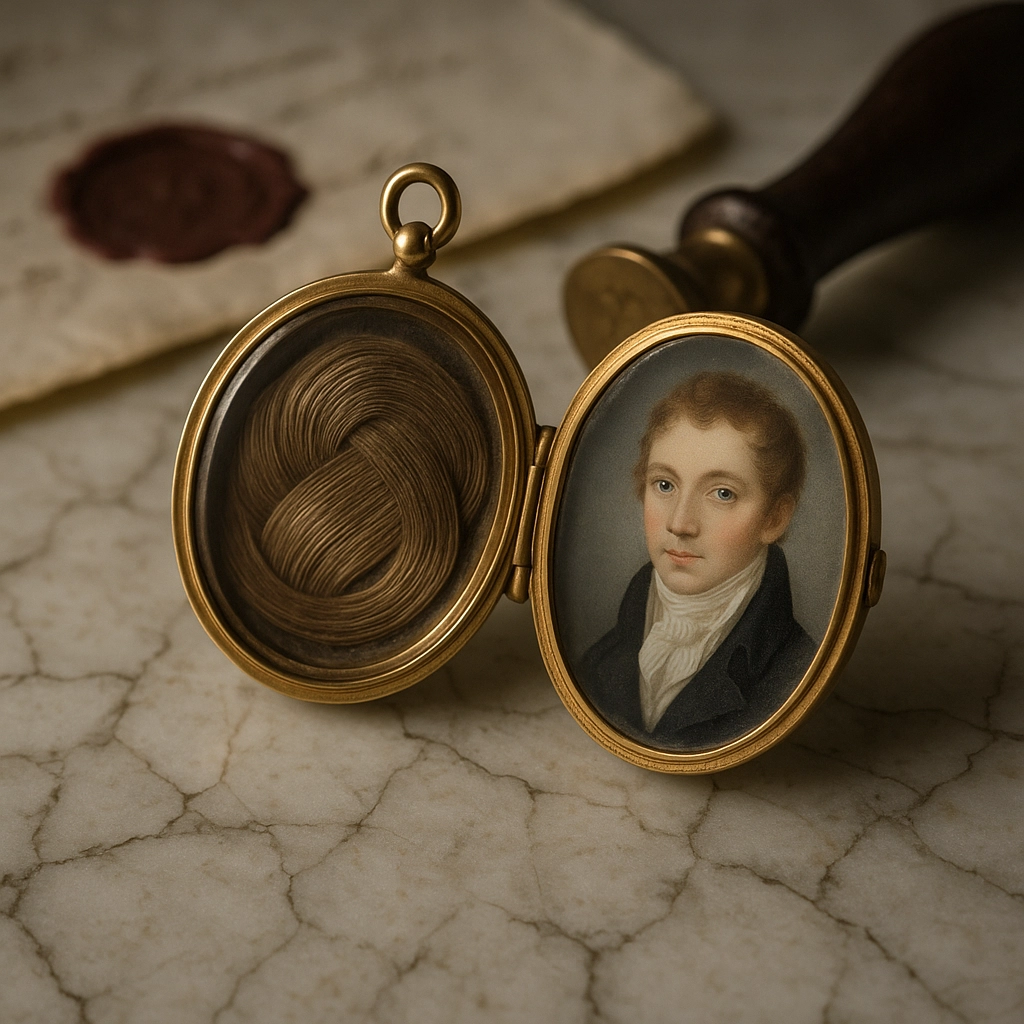Georgian Era Jewelry: Collector’s Insights & Fun Facts (Part 3 of 4)
This time, let’s step away from the grand ballrooms and get hands-on. Whether you’re rolling up your sleeves at an antique fair, digging through a family jewel box, or just love soaking up old-world charm, there are a few tips and fun facts I think every Georgian jewelry fan should know. So pour a cup of tea, maybe grab your magnifying glass, and let’s get into the good stuff.
Authenticating Genuine Georgian Jewelry
There’s something raw, a little “perfectly imperfect,” about authentic Georgian pieces. Unlike today’s precise casting and laser-sharp design, every single item made during 1714 to 1837 was individually handcrafted. No two pieces are quite alike—look for those subtle quirks and tiny maker’s “mistakes” that add tons of personality. If you’re wearing a Georgian piece right now, flip it over and check the finish—does it feel just a little rough to the touch? That’s a good thing!
Foil-Backed Gemstones:
One giveaway for me has always been how the stones are set. Picture the sparkle of a candlelit ballroom—Georgian jewelers loved to maximize that shimmer by backing gems with thin foils, often tinted, behind closed settings. This trick amped up the richness of every diamond and colored gemstone. Over the centuries, sometimes this foil tarnished or darkened, which means seeing a faded or even reddish tint under the stone isn’t a dealbreaker—it’s a sign of the real McCoy.

Unmarked Gold & Unique Metals:
You won’t find clear 18k or 22k stamps on true Georgian gold; hallmarking wasn’t routine until later. Often, high-karat gold (sometimes even pinchbeck—a golden copper-zinc blend for costume jewels) was used for mounting. Look out for jewelry that combines silver tops and gold backs (common to protect fine clothes from tarnish). If your piece feels substantial, yet oddly soft in color (think mellow 14k yellow, not showy 24k), that’s typically what you’d expect from this period.
Hand-Finished Settings and Backs:
Georgian settings practically wrap themselves around their gems—since each stone, bead, or paste cabochon was cut by hand, the setting had to be built around it instead of the other way around. Have a look at the back: do you see closed, rounded domes or scalloped edges? What about teensy bezels or claws that look hand-soldered? That’s spot-on for authentic pieces.
Showstopping Craftsmanship & Style
I’m always amazed by the artistry squeezed into the tiniest brooch or hairpin! These are a few Georgian techniques that leave me in awe:
Repoussé and Cannetille:
Ever see gold that looks like fabric embroidery? That’s cannetille—fine, coiled wirework that almost seems stitched rather than soldered. Repoussé is equally wild: they hammered flat sheets into dimensional flowers and leaves (or even whole scenes!). Run your finger across the back and front: can you feel the designs? No machine made this. It’s all by hand, and every bump tells a story.

Custom, One-Off Designs:
Because nothing was mass-produced, every ring, necklace, or hair ornament is its own mini-masterpiece. Sometimes, you’ll notice irregular pearl shapes or a stone that’s a little off-center—those eccentricities were celebrated rather than hidden. It turns Georgian jewelry into the ultimate conversation piece.
Cut Steel Sparkle:
Here’s one I always love to share. During wartime, when the French court needed gold and gemstones to fund the Seven Years’ War, steel jewelry suddenly became all the rage—think hundreds of teeny, polished steel studs arranged to outshine diamonds. If you come across a dark, glossy brooch or buckle with tiny facets shimmering like stars, you might just be holding a piece of history shaped by world events.
Fun Georgian Facts to Share
-
Parure Mad:
Imagine a set of up to sixteen matching accessories—bracelets, earrings, necklaces, tiaras—all tucked into a satin-lined leather box. That’s a parure. Sometimes, these sets were so over-the-top that you could basically dress for all occasions by mixing and matching only Georgian jewels.
-
Paste for All:
Not just “costume,” but serious business: glass paste cut and set to mimic top-tier diamonds and colored stones. These were so well-made that even aristocrats wore them, and they’re collectors’ favorites today. -
Natural Pearls:
Every pearl in a Georgian piece is the real deal—no cultured or faux stuff. So, the subtle mismatches in shape, color, and luster? Proof of authenticity. -
Memorial Hair Jewelry:
It might sound a little strange in a modern context, but back then, weaving a loved one’s hair into a brooch or ring was both sweet and sentimental. If you spot intricate mesh or woven strands in the background of a locket, you’re holding a tiny, preserved memory.
Famous Georgian Pieces & Notable Collectors
Let’s name drop for a second! Some of the most iconic Georgian jewels can be traced to royalty and the upper crust of their time:
-
Queen Charlotte’s Parure:
Lavish diamonds, rose-cut and set in silver-topped gold, still stun in museum exhibits today. If you ever see a multi-piece suite of matching gemstones, know you’re gazing at the kind of set only queens could afford. -
The Portland Tiara:
A legend among tiaras, with Georgian diamonds set in all their glory. It even survived a notorious heist!
On the collector’s side, it’s not just museums and aristocratic families who have prized these pieces. Modern jewelry icons—like Elizabeth Taylor—had a soft spot for Georgian diamonds, and many serious antique collectors still scour the globe for authentic finds.
How I Care for Antique Jewelry
Suppose you’re lucky enough to own or wear a Georgian jewel (or just hoping to one day!). Here are my tried-and-true care tips:
-
Keep it Dry:
Water is foil’s worst enemy. Moisture can tarnish or loosen foil-backed gems, so always remove rings and brooches before washing hands or heading outside in wet weather. -
Gentle Cleaning:
Forget harsh chemicals or ultrasonic cleaners—use a soft, dry brush to dislodge dust. If you must wipe, a barely-damp cloth (and I mean barely) is safest. -
Check for Loose Stones:
Settings are fragile—inspect regularly and if something feels wobbly, steer clear of wearing it until a trustworthy jeweler can fix it. -
No Direct Sunlight:
Store out of sunlight to keep colored gems and foils from fading, and always return each piece to a padded box or cloth pouch after wearing.
Why Collect Georgian Jewelry?
Honestly, the best part about collecting Georgian pieces isn’t just their beauty—it’s getting to hold real history in your hand. Each scar, every quirky setting, and that unmistakable “handmade” look tells a story from nearly three centuries ago. Whether you’re admiring a delicate locket with a lock of hair or showing off a candlelit diamond ring, you’re connecting with someone’s world long before ours.
So next time you come across a rough-around-the-edges ring or a necklace gleaming just a bit more brightly than you’d expect, ask yourself—could this be Georgian? The thrill of the hunt is half the fun.

What Georgian-era detail have you found most surprising so far?
Maybe you’re wearing a piece right now you suspect is older than it looks—give it another look and see if it tells you a story.
Georgian Era jewelry has a charm that goes beyond beauty—it’s all about craftsmanship, history, and stories waiting to be discovered. Now that you know how to spot authentic pieces and care for them, you’re one step closer to curating your own collection.
Join us tomorrow for the final part of the series, where we’ll explore how Georgian designs continue to inspire jewelry lovers and makers today.
Cheers,
Peter